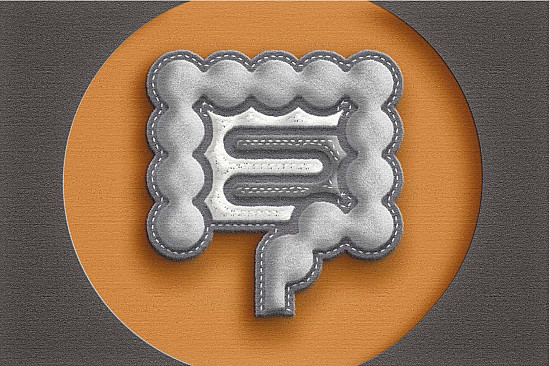Tips for better bowel control
Try simple measures first, like using a fiber supplement and treating underlying conditions.

Nobody wants to talk about or even imagine it. But loss of bowel control — known as fecal incontinence — is a problem for millions of adults in the United States, especially women.
"It becomes more common with age. It's socially isolating and takes away your dignity. You live in fear that you have stool in your pants and people can smell it. Some people won't even tell their doctors about it," says Dr. Kyle Staller, a gastroenterologist at Harvard-affiliated Massachusetts General Hospital.
Symptoms and causes
Feces can leak out of the rectum accidentally — in liquid form or as solid stool — for a number of reasons. One is that age tends to weaken muscles, including the anal sphincter (the muscle that holds in feces until you're ready for a bowel movement).
Damage to nerves or muscles can also lead to fecal incontinence. You may experience damage from rectal surgery, inflammatory bowel disease, multiple sclerosis, stroke, childbirth, or diabetes, for example.
Fecal incontinence can be an effect of chronic diarrhea from conditions such as irritable bowel disease. Impacted stool due to constipation can also cause fecal incontinence.
And sometimes, fecal incontinence is the result of an attempt to thwart constipation. "Older people frequently take laxatives and stool softeners because they're worried about constipation. That creates loose stool. If age has weakened the muscles of the anal sphincter, fecal incontinence can occur," says explains Dr. Jennifer Irani, a gastrointestinal surgeon with Harvard-affiliated Brigham and Women's Hospital.
Try this at home
Both experts suggest trying simple fixes for fecal incontinence before seeking treatment from a doctor.
You can cut back on stool softeners and laxatives, if those are causing the problem. Or you can bulk up your stool (so it's easier to hold on to) with an over-the-counter fiber capsule or a powder that you can add to a drink or food. Examples include Metamucil, Citrucel, FiberCon or Benefiber.
"Fiber won't constipate you," Dr. Irani says. "The rectum is smart and can sense bulkiness. When you have more sensation, you have more time to get to the bathroom," she says.
You can also try bulking your stool with dietary fiber. Legumes such as beans and lentils are a go-to source. For example, a cup of canned low-sodium black beans has about 17 grams of fiber. A cup of cooked lentils has about 16 grams of fiber.
Taking a nonprescription antidiarrheal medication such as loperamide (Imodium) can work if you have incontinence with diarrhea. "It's okay to take it every day under supervision, but it won't work if you have a weakened sphincter," Dr. Staller points out.
Pelvic floor exercises (Kegel exercises) may also help reduce fecal incontinence. These involve contracting (squeezing) the anal sphincter several times per day or whenever you feel fullness in the rectum. "Pelvic floor physical therapy will help, but it won't always solve the problem. Also, you have to do the exercises every day or it doesn't work," Dr. Irani notes.
Pads that you tuck into your underwear or adult diapers can offer security when you have fecal incontinence. But pads and diapers can irritate the skin, as can a bowel movement that's been near your skin for too long. Using a barrier cream such as zinc oxide can help protect the skin.
Dietary fiber linked to a lower risk for fecal incontinenceWhen fecal incontinence strikes, increasing your dietary fiber with foods like legumes can help get you back to normal. And a Harvard-led study published last September in Gastroenterology suggests that eating a high-fiber diet over the long term is associated with a lower risk for developing fecal incontinence in older women. Researchers looked at questionnaire responses from more than 58,000 women who were followed for more than 20 years. Women in the study who ate the most fiber (25 grams per day) had an 18% lower risk for fecal incontinence, compared with women who ate the least amount of fiber (13.5 grams per day). The study is observational and doesn't prove that eating fiber prevents fecal incontinence. But it's reasonable that it should. "There are so many reasons why fiber can be helpful. It may help ward off heart disease and diabetes. A reduced risk for fecal incontinence adds another potential benefit," says Dr. Kyle Staller, the lead author of the study and a gastroenterologist at Harvard-affiliated Massachusetts General Hospital. |
Formal diagnosis
When simple fixes aren't making a difference, it may be time to see your primary care physician or a specialist. You can expect a specialist to take a full medical history and conduct a digital rectal exam (feeling the inside of the anus with a gloved finger to assess how tight the anal sphincter is).
Further testing to look for damage to the anal canal, sphincter, or lower colon may include
-
anoscopy (insertion of a small, short scope into the anal canal)
-
sigmoidoscopy (insertion of a flexible viewing tube to examine the sigmoid or lower colon)
-
anal ultrasound (using sound waves to look at the sphincter structure)
-
anal manometry (insertion of a catheter and balloon to measure anal sphincter strength).
Treatment
Often, treatment of an underlying bowel condition, such as impacted stool or chronic diarrhea, solves the problem. "It's much easier to fix a bowel disturbance than it is to tighten up the sphincter," Dr. Staller says.
Beyond that, there are only a few treatment options for older adults whose fecal incontinence does not respond to simple measures.
One option is called sacral nerve stimulation. "It's like a pacemaker for your anus," Dr. Irani explains. "We implant wires into the sacral nerve in the spine to stimulate the sphincter muscle to contract. What's key is that it will only work if incontinence involves solid stool, not liquid stool. Also, you have to be able to operate an external device and participate in your care."
The other option is surgery to create a colostomy, bringing the end of the large intestine through a special opening in the abdomen so that it drains into an attached bag. "People rarely choose this option. They'd rather wear an adult diaper. But people who choose surgery seem to get their freedom back. They just empty the bag when it gets full," Dr. Irani says. "Colostomy is especially helpful for people who are in a wheelchair and can't get to the bathroom frequently," Dr. Staller adds.
A ray of hope
Most people don't have to resort to drastic measures like surgery. Bulking stool through diet or with fiber powders usually solves or greatly reduces the problem. But if that's not working for you, don't suffer in silence. Your doctor may be able to help.
"Just talking about it with someone who knows what you're going through is a real benefit," Dr. Staller says. "You may not be able to get rid of fecal incontinence, but you may be able to eliminate 50% of the episodes and many of the accidents you have. And we know that even one accident feels like it's too many."
Image: © GregorBister/Getty Images
Disclaimer:
As a service to our readers, Harvard Health Publishing provides access to our library of archived content. Please note the date of last review or update on all articles.
No content on this site, regardless of date, should ever be used as a substitute for direct medical advice from your doctor or other qualified clinician.















